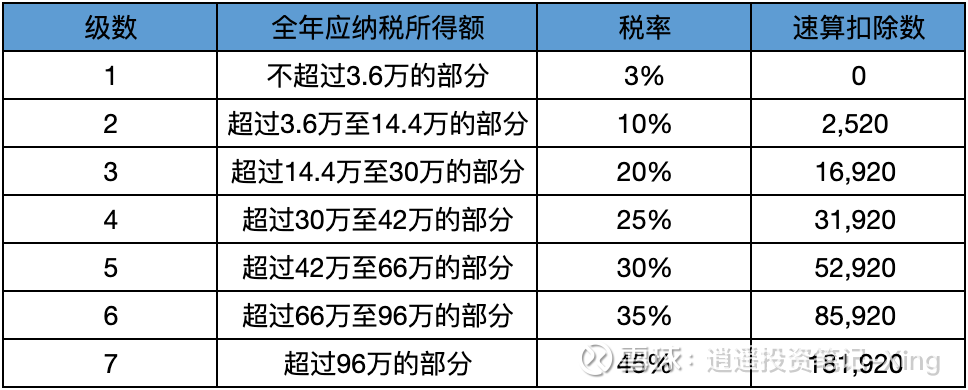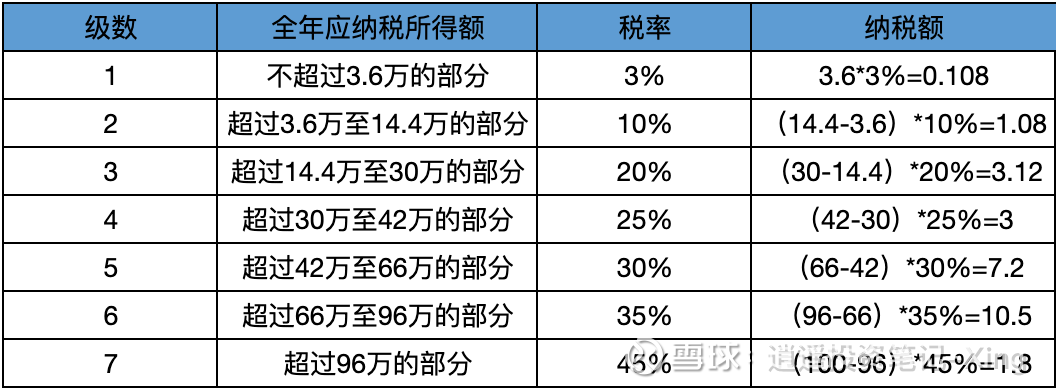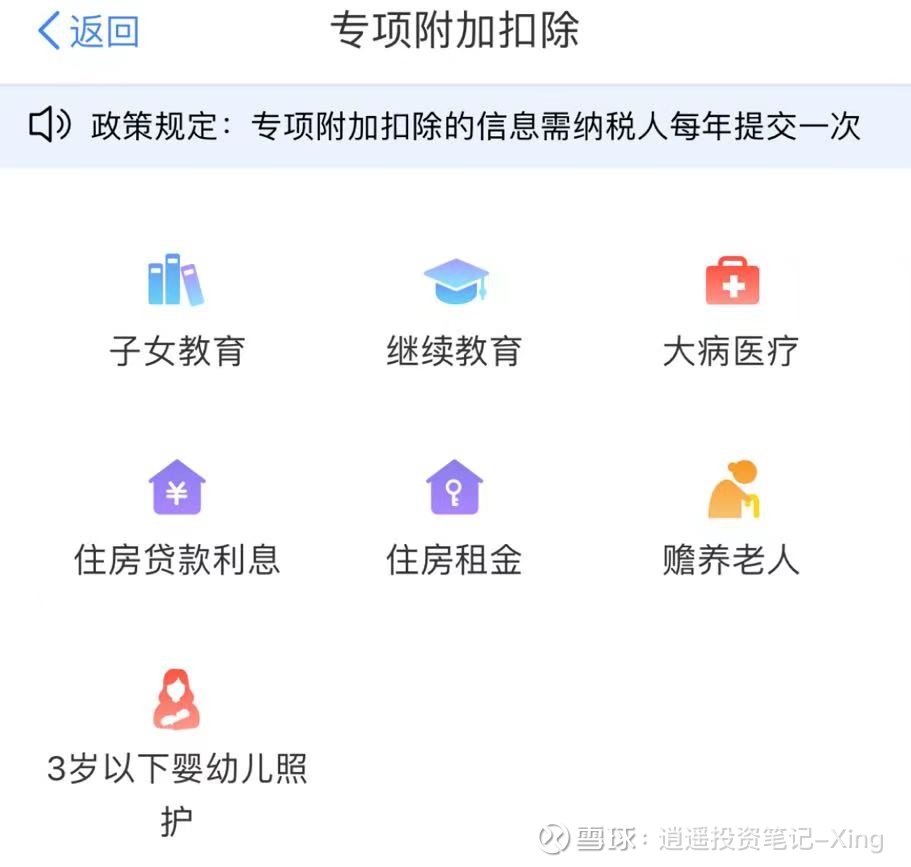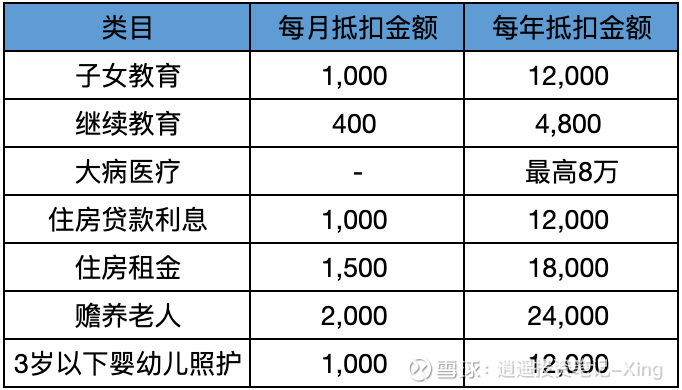The personal pension account, which has been prepared for many years, has finally been launched recently, which has also made personal pension investment and tax reduction a hot topic.
In a nutshell, personal pension account: You can transfer up to 12,000 at your own expense each year, and the transferred amount can be used for investment and financial management. The advantage is that it can be used to deduct individual taxes. The disadvantage is that the transferred funds can only be withdrawn after retirement.
Whether to participate in a personal pension plan, the key is to see how much tax relief you can give yourself. Therefore, if you want to understand the value of the pension plan, you must first understand the mechanism and calculation method of personal tax in my country.
To clarify the personal tax and personal pension account, an article is a bit long, so I will divide it into two parts:
Top: How is personal tax calculated?
Next: How much tax can a personal pension account save?
I have run many companies, so I have some understanding of the personal tax system. Today we will focus on the calculation method of personal tax.
my country’s individual tax adopts a seven-level excess progressive tax rate for comprehensive income, with a tax rate of 3-45%. The annual comprehensive income tax rate table is as follows:

Many people think that personal income tax is based on the tax rate above the annual income package, which means that personal income tax should be paid, which is wrong. In fact, the individual tax is based on the annual taxable income to set the tax rate table above. To give the simplest example, if the annual taxable income is 1 million, then the individual tax you should pay is calculated in steps according to the above table. for:

Tax payable = 0.108+1.08+3.12+3+7.2+10.5+1.8=268080 yuan, that is, to calculate the individual tax to be paid for each segment, and then add them up. In addition, there is another simple calculation method, which is the annual taxable income * tax rate – quick deduction, or take 1 million as an example, that is, 1 million * 45% – 181920 = 268080 yuan.
Therefore, the payment of individual tax is ultimately related to the annual taxable income, so what is the annual taxable income related to?
Go directly to the formula:
Annual taxable income = (monthly income – five insurances and one housing fund – 5000) * 12 – annual special additional deduction = annual income – annual five insurances and one housing fund – 60,000 – annual special additional deduction
Because the payment amount of the five insurances and one housing fund is linked to income, the annual taxable income is related to two factors: annual income and special additional deductions. Annual income is easy to understand, but what is special additional deductions? Look at a picture first.

Many people should have seen this picture, which is the interface for handling tax refunds. Everyone knows that the latest personal tax regulations set a monthly tax deduction amount of 5,000 yuan (60,000 yuan per year). The special additional deduction is a policy issued by the state to enable the masses to enjoy education, Additional deductions for medical care, pensions, etc. will further reduce the tax burden of the masses.
Let’s take a look at the respective deductions for the above seven items:

You can calculate according to your own situation, and if you meet the conditions, you can reduce the annual taxable income according to the above amount.
Note:
1. Children’s education: from 3 years old to doctoral students, each child can enjoy a quota of 12,000 yuan per year, two children 24,000 yuan, and so on. You can choose 50% of the deductible amount for each parent, or you can give all of it to one person.
2. Continuing education: 4,800 RMB per year for academic (degree) continuing education; 3,600 RMB per year for vocational qualification continuing education.
3. Serious illness medical treatment: after medical insurance reimbursement, the part of the remaining self-pay exceeding 15,000 yuan will be included in the special additional deduction, with a maximum amount of 80,000 yuan.
4. Housing loan interest: The annual quota is 12,000, which must be the first housing loan. The deductible amount can be 50% for each couple, or all can be given to one person.
5. Housing rent: 18,000 a year for municipalities directly under the Central Government, provincial capitals, or specially marked cities; 13,200 a year for a population of more than 1 million; 9,600 a year for a population of less than 1 million. Housing loan interest and housing rent can only be selected from one of the two, and cannot be reduced or exempted at the same time.
6. Supporting the elderly: Parents over the age of 60 can meet the conditions. The annual quota is 24,000. Multiple elderly people are not counted repeatedly, and the annual quota is still calculated at 24,000. The only child can enjoy all the quota alone, and the non-single child can share the quota equally or determine the quota through negotiation.
7. Care of infants and young children under 3 years old: 12,000 for each child a year, 24,000 for two children, and so on. You can choose 50% of the deductible amount for each parent, or you can give all of it to one person.
After understanding the special additional deduction, personal tax is easy to calculate. Final personal tax = annual taxable income * tax rate – quick deduction = [annual income – annual total payment of five insurances and one housing fund – 60,000 – annual special items Additional deduction] * tax rate – quick deduction
for example:
Monthly income: 40,000, annual income 4*12=480,000
Five insurances and one housing fund (Wuhan as an example): monthly payment of 4446 yuan, annual payment of 4446*12=53352.
Annual tax reduction amount: 5000*12=60000.
Special additional deduction: If you have one child who is studying, one child is under 3 years old, two elderly people over 60 years old need to be supported, and you have a house and a mortgage. Then the total special additional deduction = 12000+12000+24000+12000=60000.
so:
Annual individual tax = (480000-53352-60000-60000) * tax rate – quick deduction = 306648*25%-31920=44742 yuan. It can be seen from this that the special additional deduction reduces the personal tax by 15,000 per year.
Earned income=480000-53352-44742=381909.
Note: When the actual monthly salary is paid, the monthly tax is first deducted according to [monthly income-five social insurance and one housing fund-5000-monthly special additional deduction]*tax rate-quick deduction, for example, in January according to the above formula Calculate the personal tax. In February, the personal tax in February is [(January + February income) – (January + February five social insurances and one housing fund) -5000*2-monthly special additional deduction *2] * tax rate -Quick calculation deduction – tax has been paid in January, and so on. Therefore, the individual tax that needs to be paid every year is not divided equally into each month. You may pay less at the beginning and pay more later; or pay more at the beginning and make it up in the end. But the personal tax for the final year is fixed.
There are probably so many detailed introductions to personal tax, but it is not complicated. You can try to calculate your personal tax according to the above formula. In the next article, we will talk about personal pension investment in detail. For people with different incomes and situations, how much tax can be reduced and whether it is worth investing, so stay tuned.
$Vanke A(SZ000002)$ $Gree Electric Appliances(SZ000651)$ $Hengrui Medicine(SH600276)$ #personal pension system#
This topic has 0 discussions in Xueqiu, click to view.
Snowball is an investor social network where smart investors are all here.
Click to download Xueqiu mobile client http://xueqiu.com/xz ]]>
This article is transferred from: http://xueqiu.com/6490468241/236853178
This site is only for collection, and the copyright belongs to the original author.